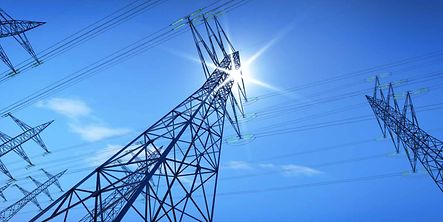Amendment to NELEV 2024
With the implementation of Solar Package I and the publication of the two ordinances amending the NELEV (Electrotechnical Properties Verification Ordinance) and EAAV (Energy System Requirements Ordinance), the German government has simplified the verification of the electrotechnical properties of generation systems with an installed capacity of up to 500 kW and a feed-in capacity of up to 270 kW.
In concrete terms, this means that the affected systems can no longer be subject to the traditional system certification process. A system certificate and a declaration of conformity are no longer required in the simplified procedure.
It is also possible to switch to the simplified procedure if the certification process has already begun.
The following conditions must be met for the simplified verification procedure to be used:
- The sum of the maximum active power of all generation units (PV inverters, CHP units, etc.) connected to the grid connection point is a maximum of 500 kW. Both newly planned generation units and existing units are taken into account.
- The maximum feed-in capacity into the grid operator's grid is a maximum of 270 kW.
- Deadlines from any system certification process that has already begun have not yet been exceeded (e.g. for submitting the declaration of conformity after the generation system has already been commissioned).
Systems with the simplified verification procedure may go into operation in accordance with VDE-AR-N 4105; the requirements of the EAAV must also be taken into account. This significantly simplifies the verification procedure.
The specific implementation, including decision support, is summarized in the FNN notice “Simplified connection and verification of generation systems and storage facilities with grid connection in medium and high voltage”, see link to the German version below.
If you are unclear about the application or the change to the simplified verification procedure, please contact the responsible grid operator.
If you have any questions regarding the handling of projects already commissioned with us, please contact our Customer Service.
Further links in German:
- FNN note / application aid for NELEV and EAAV (Simplified connection and verification of generation systems and storage facilities with grid connection in the medium and high voltage)
- Current Version NELEV
- Current Version EAAV
Specification of the requirement for quasi-stationary operation
According to chapter 10.2.1.2 of VDE-AR-N 4110, active power reduction is only permissible for the purpose of reactive power provision (so-called reactive power prioritization) and not in general. I.e. within the voltage band from 90% Uc to 110% Uc, the DCA may not reduce active power and reactive power feed-in, e.g. for reasons of possible overload. Reduction of active power feed-in is only permitted for reasons of reactive power provision. This can lead to a permanent reduction in active power, especially for DCSs that contain type 2 DC units and storage tanks and are equipped without automatic tap changers on the machine transformer. This must be taken into account when considering the economic efficiency of the DC unit.
In the past, this was not clearly defined in the certification guideline FGW TG8. DCs registered after 01.07.2022 will now be checked for this criterion in accordance with the amendment to the FGW TG8.
For further information see the article HERE (Links to VDE German Website)
(FAQ, 10.2.1.2 Quasi-stationary operation)
Plant certificate (B) subject to conditions
When the amendment to the NELEV (Electrotechnical Properties Verification Ordinance) came into force on 30.07.2022, an "installation certificate (B) subject to conditions" was introduced. The "plant certificate (B) subject to conditions" will represent an effective acceleration of commissioning compared to the standard procedure defined in VDE-AR-N 4110. As far as possible, the regular procedure for the plant certificate B according to VDE-AR-N 4110 chapter 11.4.24 is recommended.
If this is foreseeably not possible by the time of the planned commissioning, the new procedure "system certificate (B) under conditions" can be used. In this case, all test points/verifications missing at the time of issuing the "system certificate (B) subject to conditions" must be listed under the conditions in accordance with section 11.4.24 of VDE-AR-N 4110 and corresponding information on the missing points must be provided. At the latest for the declaration of conformity, at the latest 18 months after commissioning, all conditions must be demonstrably fulfilled. If this is not possible after this 18-month period, the grid operator must disconnect the DC from the grid in accordance with the NELEV.
We will apply this procedure in consultation with our customers with immediate effect.
Further information, in particular on the documents to be submitted to the certification body accredited according to DIN 17065, can be found HERE (Links to German PDF).



